Wei Wei
Goal-Guided Efficient Exploration via Large Language Model in Reinforcement Learning
Sep 26, 2025Abstract:Real-world decision-making tasks typically occur in complex and open environments, posing significant challenges to reinforcement learning (RL) agents' exploration efficiency and long-horizon planning capabilities. A promising approach is LLM-enhanced RL, which leverages the rich prior knowledge and strong planning capabilities of LLMs to guide RL agents in efficient exploration. However, existing methods mostly rely on frequent and costly LLM invocations and suffer from limited performance due to the semantic mismatch. In this paper, we introduce a Structured Goal-guided Reinforcement Learning (SGRL) method that integrates a structured goal planner and a goal-conditioned action pruner to guide RL agents toward efficient exploration. Specifically, the structured goal planner utilizes LLMs to generate a reusable, structured function for goal generation, in which goals are prioritized. Furthermore, by utilizing LLMs to determine goals' priority weights, it dynamically generates forward-looking goals to guide the agent's policy toward more promising decision-making trajectories. The goal-conditioned action pruner employs an action masking mechanism that filters out actions misaligned with the current goal, thereby constraining the RL agent to select goal-consistent policies. We evaluate the proposed method on Crafter and Craftax-Classic, and experimental results demonstrate that SGRL achieves superior performance compared to existing state-of-the-art methods.
More performant and scalable: Rethinking contrastive vision-language pre-training of radiology in the LLM era
Sep 16, 2025Abstract:The emergence of Large Language Models (LLMs) presents unprecedented opportunities to revolutionize medical contrastive vision-language pre-training. In this paper, we show how LLMs can facilitate large-scale supervised pre-training, thereby advancing vision-language alignment. We begin by demonstrate that modern LLMs can automatically extract diagnostic labels from radiology reports with remarkable precision (>96\% AUC in our experiments) without complex prompt engineering, enabling the creation of large-scale "silver-standard" datasets at a minimal cost (~\$3 for 50k CT image-report pairs). Further, we find that vision encoder trained on this "silver-standard" dataset achieves performance comparable to those trained on labels extracted by specialized BERT-based models, thereby democratizing the access to large-scale supervised pre-training. Building on this foundation, we proceed to reveal that supervised pre-training fundamentally improves contrastive vision-language alignment. Our approach achieves state-of-the-art performance using only a 3D ResNet-18 with vanilla CLIP training, including 83.8\% AUC for zero-shot diagnosis on CT-RATE, 77.3\% AUC on RAD-ChestCT, and substantial improvements in cross-modal retrieval (MAP@50=53.7\% for image-image, Recall@100=52.2\% for report-image). These results demonstrate the potential of utilizing LLMs to facilitate {\bf more performant and scalable} medical AI systems. Our code is avaiable at https://github.com/SadVoxel/More-performant-and-scalable.
Avoiding Knowledge Edit Skipping in Multi-hop Question Answering with Guided Decomposition
Sep 09, 2025Abstract:In a rapidly evolving world where information updates swiftly, knowledge in large language models (LLMs) becomes outdated quickly. Retraining LLMs is not a cost-effective option, making knowledge editing (KE) without modifying parameters particularly necessary. We find that although existing retrieval-augmented generation (RAG)-based KE methods excel at editing simple knowledge, they struggle with KE in multi-hop question answering due to the issue of "edit skipping", which refers to skipping the relevant edited fact in inference. In addition to the diversity of natural language expressions of knowledge, edit skipping also arises from the mismatch between the granularity of LLMs in problem-solving and the facts in the edited memory. To address this issue, we propose a novel Iterative Retrieval-Augmented Knowledge Editing method with guided decomposition (IRAKE) through the guidance from single edited facts and entire edited cases. Experimental results demonstrate that IRAKE mitigates the failure of editing caused by edit skipping and outperforms state-of-the-art methods for KE in multi-hop question answering.
ComoRAG: A Cognitive-Inspired Memory-Organized RAG for Stateful Long Narrative Reasoning
Aug 14, 2025



Abstract:Narrative comprehension on long stories and novels has been a challenging domain attributed to their intricate plotlines and entangled, often evolving relations among characters and entities. Given the LLM's diminished reasoning over extended context and high computational cost, retrieval-based approaches remain a pivotal role in practice. However, traditional RAG methods can fall short due to their stateless, single-step retrieval process, which often overlooks the dynamic nature of capturing interconnected relations within long-range context. In this work, we propose ComoRAG, holding the principle that narrative reasoning is not a one-shot process, but a dynamic, evolving interplay between new evidence acquisition and past knowledge consolidation, analogous to human cognition when reasoning with memory-related signals in the brain. Specifically, when encountering a reasoning impasse, ComoRAG undergoes iterative reasoning cycles while interacting with a dynamic memory workspace. In each cycle, it generates probing queries to devise new exploratory paths, then integrates the retrieved evidence of new aspects into a global memory pool, thereby supporting the emergence of a coherent context for the query resolution. Across four challenging long-context narrative benchmarks (200K+ tokens), ComoRAG outperforms strong RAG baselines with consistent relative gains up to 11% compared to the strongest baseline. Further analysis reveals that ComoRAG is particularly advantageous for complex queries requiring global comprehension, offering a principled, cognitively motivated paradigm for retrieval-based long context comprehension towards stateful reasoning. Our code is publicly released at https://github.com/EternityJune25/ComoRAG
Efficient Speculative Decoding for Llama at Scale: Challenges and Solutions
Aug 11, 2025Abstract:Speculative decoding is a standard method for accelerating the inference speed of large language models. However, scaling it for production environments poses several engineering challenges, including efficiently implementing different operations (e.g., tree attention and multi-round speculative decoding) on GPU. In this paper, we detail the training and inference optimization techniques that we have implemented to enable EAGLE-based speculative decoding at a production scale for Llama models. With these changes, we achieve a new state-of-the-art inference latency for Llama models. For example, Llama4 Maverick decodes at a speed of about 4 ms per token (with a batch size of one) on 8 NVIDIA H100 GPUs, which is 10% faster than the previously best known method. Furthermore, for EAGLE-based speculative decoding, our optimizations enable us to achieve a speed-up for large batch sizes between 1.4x and 2.0x at production scale.
Prompt-Free Conditional Diffusion for Multi-object Image Augmentation
Jul 08, 2025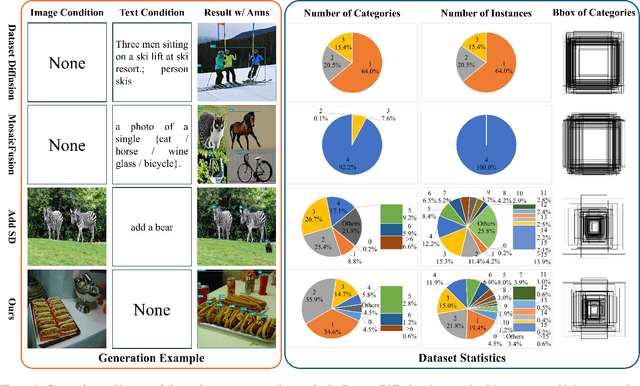
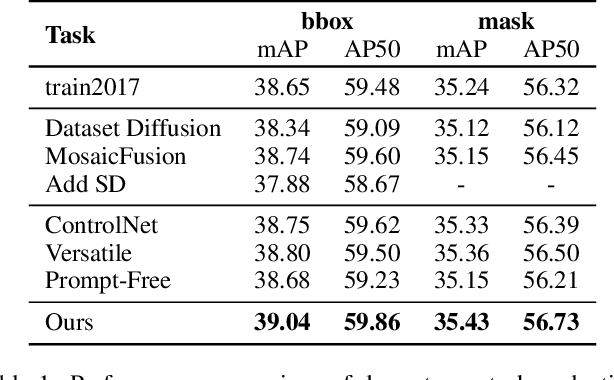
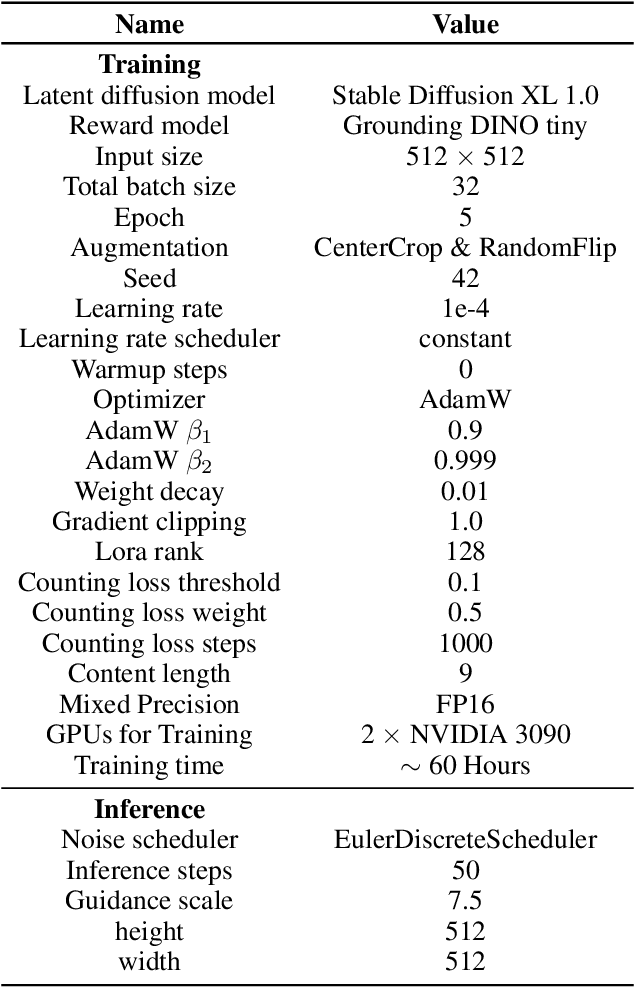
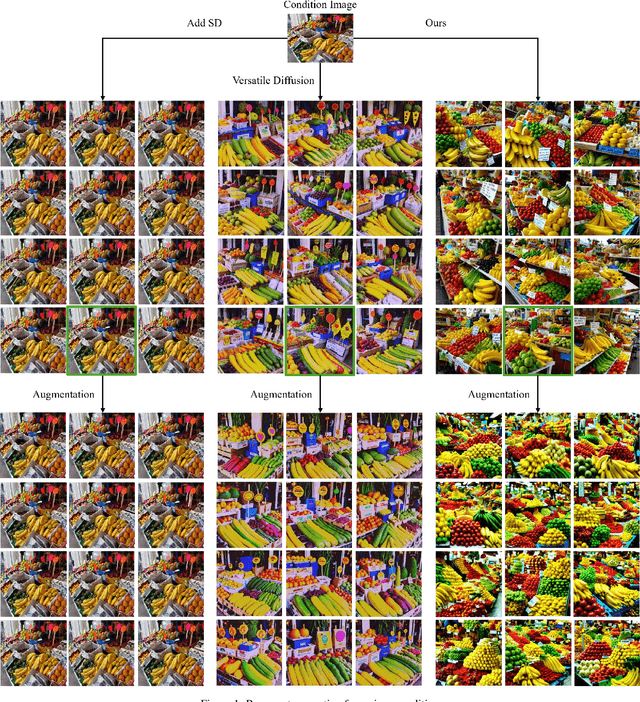
Abstract:Diffusion models has underpinned much recent advances of dataset augmentation in various computer vision tasks. However, when involving generating multi-object images as real scenarios, most existing methods either rely entirely on text condition, resulting in a deviation between the generated objects and the original data, or rely too much on the original images, resulting in a lack of diversity in the generated images, which is of limited help to downstream tasks. To mitigate both problems with one stone, we propose a prompt-free conditional diffusion framework for multi-object image augmentation. Specifically, we introduce a local-global semantic fusion strategy to extract semantics from images to replace text, and inject knowledge into the diffusion model through LoRA to alleviate the category deviation between the original model and the target dataset. In addition, we design a reward model based counting loss to assist the traditional reconstruction loss for model training. By constraining the object counts of each category instead of pixel-by-pixel constraints, bridging the quantity deviation between the generated data and the original data while improving the diversity of the generated data. Experimental results demonstrate the superiority of the proposed method over several representative state-of-the-art baselines and showcase strong downstream task gain and out-of-domain generalization capabilities. Code is available at \href{https://github.com/00why00/PFCD}{here}.
SFT-GO: Supervised Fine-Tuning with Group Optimization for Large Language Models
Jun 17, 2025Abstract:Supervised fine-tuning (SFT) has become an essential step in tailoring large language models (LLMs) to align with human expectations and specific downstream tasks. However, existing SFT methods typically treat each training instance as a uniform sequence, giving equal importance to all tokens regardless of their relevance. This overlooks the fact that only a subset of tokens often contains critical, task-specific information. To address this limitation, we introduce Supervised Fine-Tuning with Group Optimization (SFT-GO), a novel approach that treats groups of tokens differently based on their importance.SFT-GO groups tokens in each sample based on their importance values and optimizes the LLM using a weighted combination of the worst-group loss and the standard cross-entropy loss. This mechanism adaptively emphasizes the most challenging token groups and guides the model to better handle different group distributions, thereby improving overall learning dynamics. We provide a theoretical analysis of SFT-GO's convergence rate, demonstrating its efficiency. Empirically, we apply SFT-GO with three different token grouping strategies and show that models trained with SFT-GO consistently outperform baseline approaches across popular LLM benchmarks. These improvements hold across various datasets and base models, demonstrating the robustness and the effectiveness of our method.
Merlin: Multi-View Representation Learning for Robust Multivariate Time Series Forecasting with Unfixed Missing Rates
Jun 14, 2025Abstract:Multivariate Time Series Forecasting (MTSF) involves predicting future values of multiple interrelated time series. Recently, deep learning-based MTSF models have gained significant attention for their promising ability to mine semantics (global and local information) within MTS data. However, these models are pervasively susceptible to missing values caused by malfunctioning data collectors. These missing values not only disrupt the semantics of MTS, but their distribution also changes over time. Nevertheless, existing models lack robustness to such issues, leading to suboptimal forecasting performance. To this end, in this paper, we propose Multi-View Representation Learning (Merlin), which can help existing models achieve semantic alignment between incomplete observations with different missing rates and complete observations in MTS. Specifically, Merlin consists of two key modules: offline knowledge distillation and multi-view contrastive learning. The former utilizes a teacher model to guide a student model in mining semantics from incomplete observations, similar to those obtainable from complete observations. The latter improves the student model's robustness by learning from positive/negative data pairs constructed from incomplete observations with different missing rates, ensuring semantic alignment across different missing rates. Therefore, Merlin is capable of effectively enhancing the robustness of existing models against unfixed missing rates while preserving forecasting accuracy. Experiments on four real-world datasets demonstrate the superiority of Merlin.
Action-Adaptive Continual Learning: Enabling Policy Generalization under Dynamic Action Spaces
Jun 06, 2025Abstract:Continual Learning (CL) is a powerful tool that enables agents to learn a sequence of tasks, accumulating knowledge learned in the past and using it for problem-solving or future task learning. However, existing CL methods often assume that the agent's capabilities remain static within dynamic environments, which doesn't reflect real-world scenarios where capabilities dynamically change. This paper introduces a new and realistic problem: Continual Learning with Dynamic Capabilities (CL-DC), posing a significant challenge for CL agents: How can policy generalization across different action spaces be achieved? Inspired by the cortical functions, we propose an Action-Adaptive Continual Learning framework (AACL) to address this challenge. Our framework decouples the agent's policy from the specific action space by building an action representation space. For a new action space, the encoder-decoder of action representations is adaptively fine-tuned to maintain a balance between stability and plasticity. Furthermore, we release a benchmark based on three environments to validate the effectiveness of methods for CL-DC. Experimental results demonstrate that our framework outperforms popular methods by generalizing the policy across action spaces.
ProRefine: Inference-time Prompt Refinement with Textual Feedback
Jun 05, 2025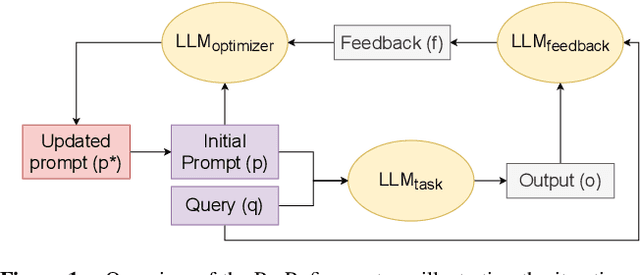
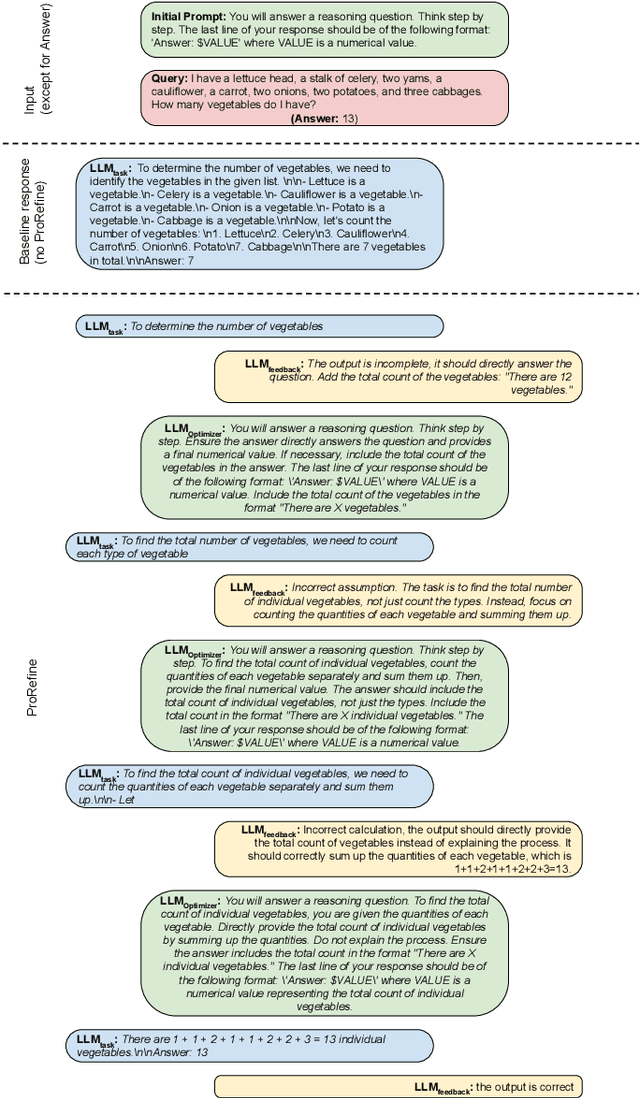
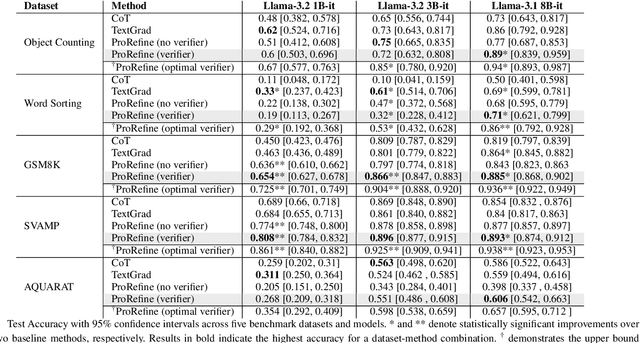
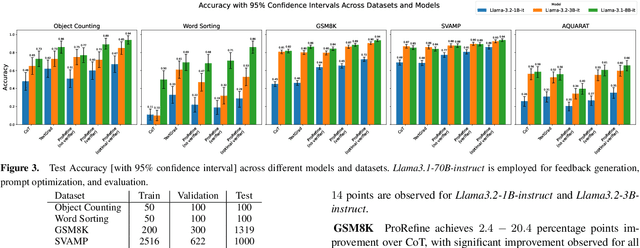
Abstract:Agentic workflows, where multiple AI agents collaborate to accomplish complex tasks like reasoning or planning, are becoming increasingly prevalent. However, these workflows often suffer from error propagation and sub-optimal performance, largely due to poorly designed prompts that fail to effectively guide individual agents. This is a critical problem because it limits the reliability and scalability of these powerful systems. We introduce ProRefine, an innovative inference-time prompt optimization method that leverages textual feedback from large language models (LLMs) to address this challenge. ProRefine dynamically refines prompts for multi-step reasoning tasks without additional training or ground truth labels. Evaluated on five benchmark mathematical reasoning datasets, ProRefine significantly surpasses zero-shot Chain-of-Thought baselines by 3 to 37 percentage points. This approach not only boosts accuracy but also allows smaller models to match the performance of larger ones, highlighting its potential for efficient and scalable AI deployment, and democratizing access to high-performing AI.
 Add to Chrome
Add to Chrome Add to Firefox
Add to Firefox Add to Edge
Add to Edge